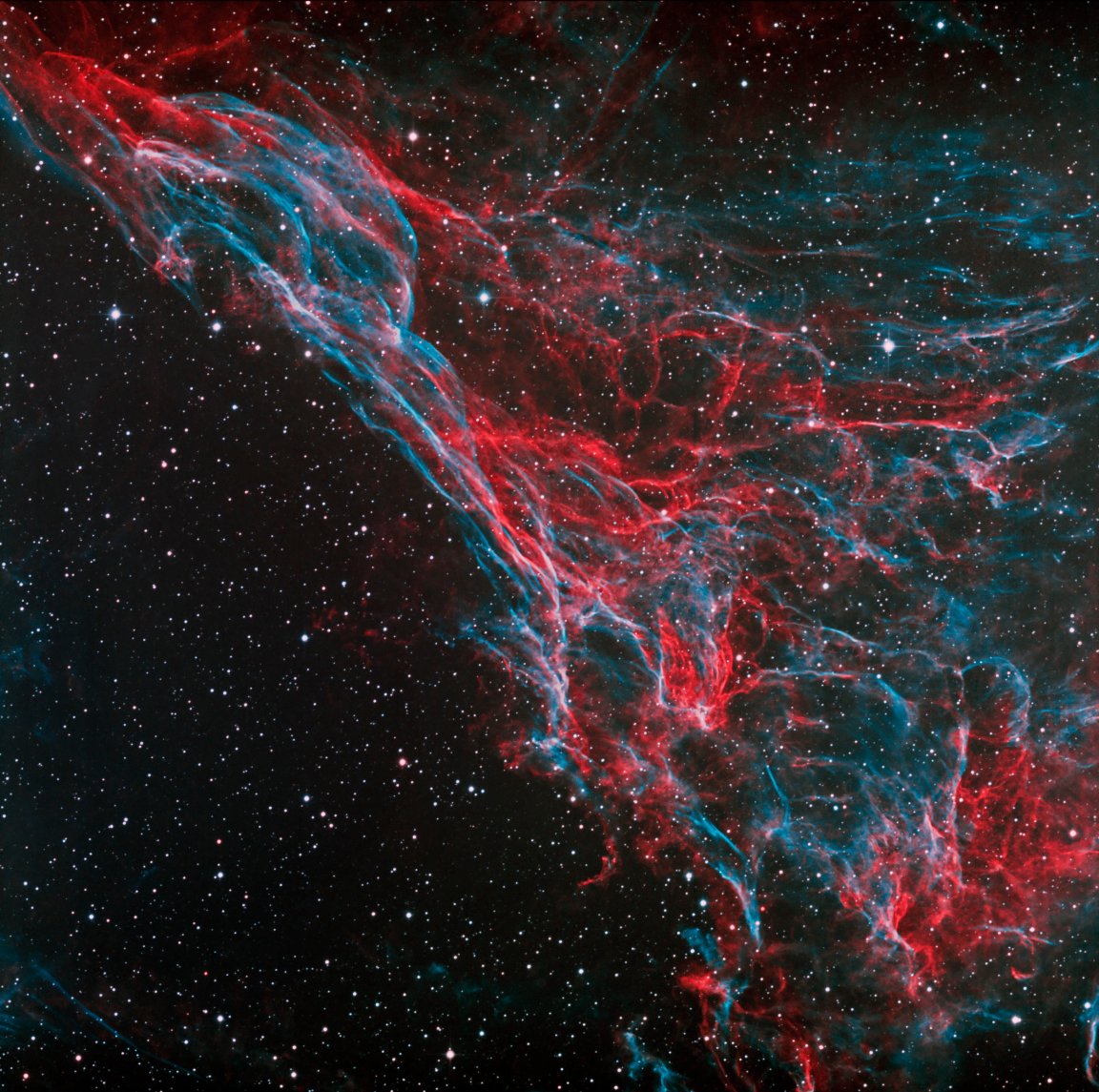

Nebulae of any type are almost always incredibly complex, detailed structures, but they rarely hold a candle to supernova remnants: the celestial fireworks that ignite when a massive star reaches the end of line, and chucks its guts out into the interstellar medium. After the dust settles, the gas configures into filamentary knots, which resemble a painting more than real life.
No supernova remnant is more remarkable in size or beauty than the Cygnus Loop, which can be found approximately 1,500 light-years from Earth in the constellation of Cygnus; it spans nearly 100 light-years across (3 full degrees, or the width of 6 full moons in our night sky). There are numerous areas of interest within the loop itself, most famously is the small section most people know as the Veil Nebula. Much lesser-known, however, is the region pictured above, called Pickering’s Triangle.
Astronomers postulate that the star that spawned the nebula and its subparts exploded anywhere between 5,000 and 10,000 years ago; they’ve also suggested that there could be a second star involved in the creation of the loop, but that hasn’t been proven definitively. Regardless, to those living on Earth during the moment at which the star exploded, they would see a huge pinpoint of light comparable in brightness to the crescent moon. It would have remained visible for weeks until noticeably dimming.